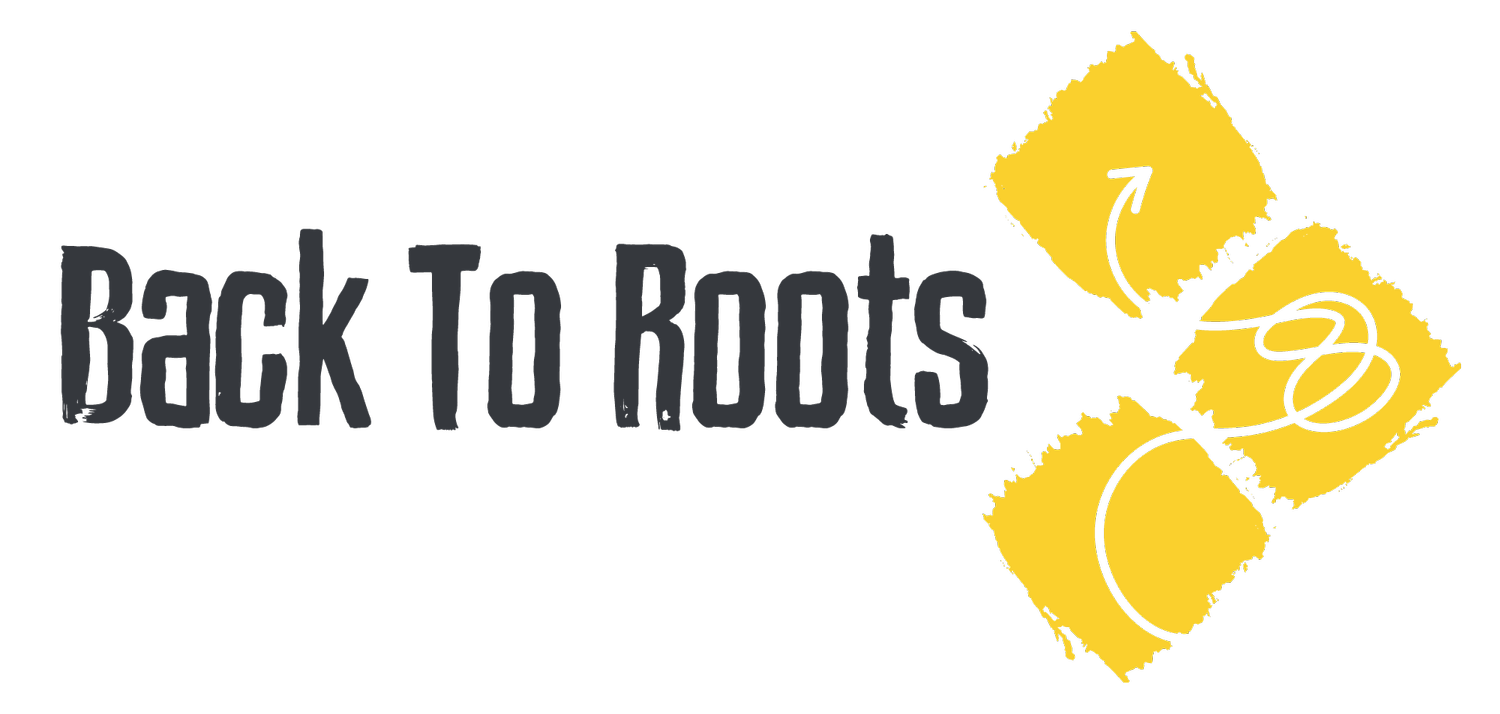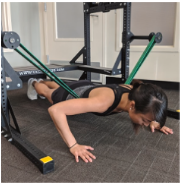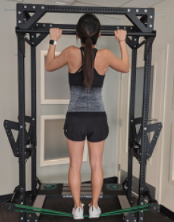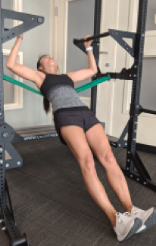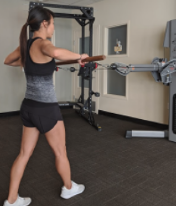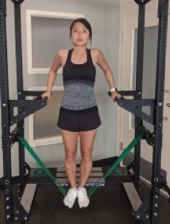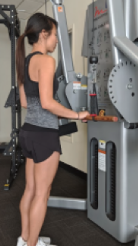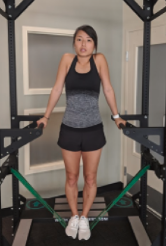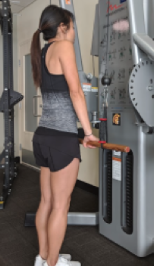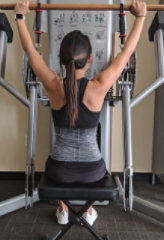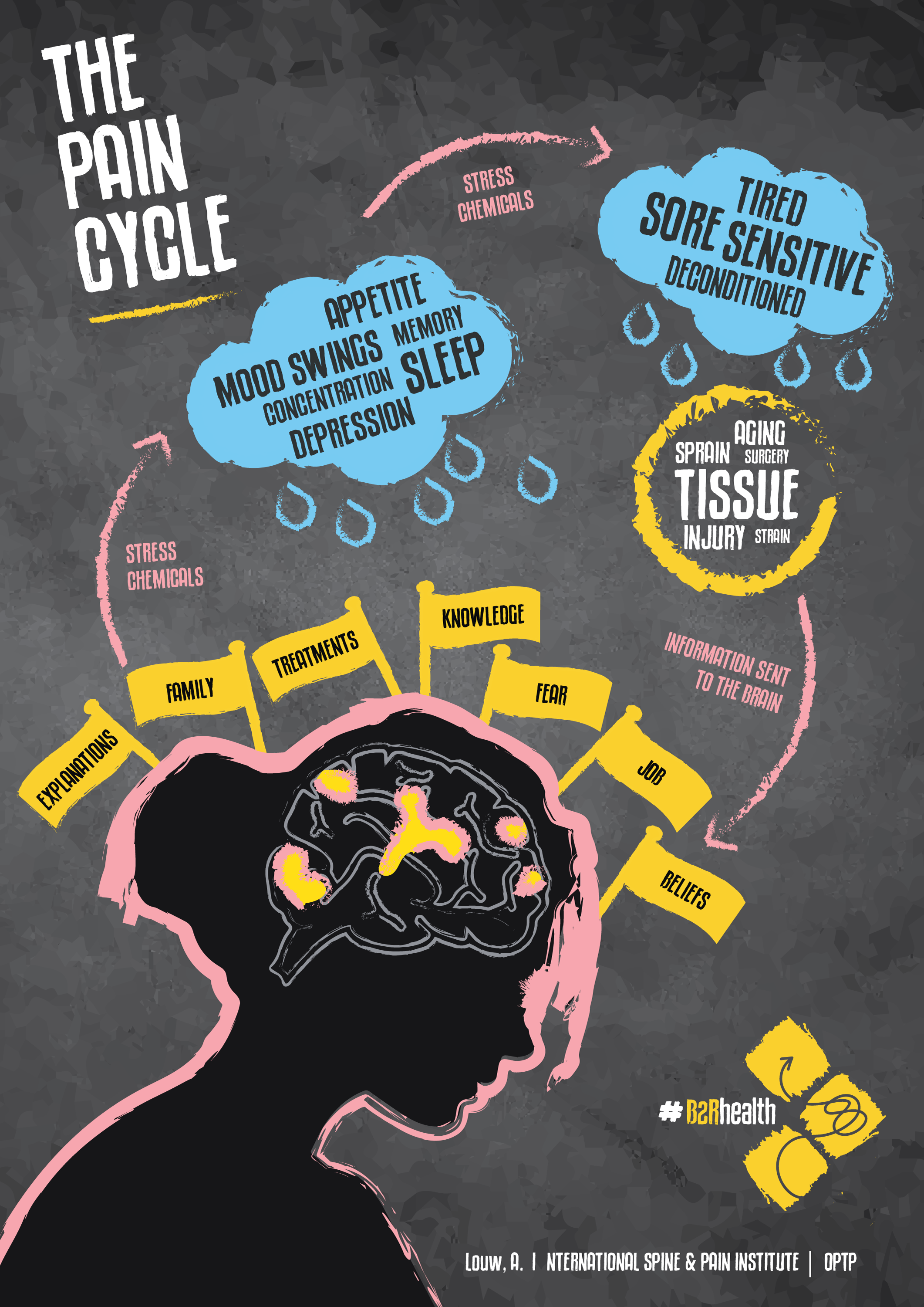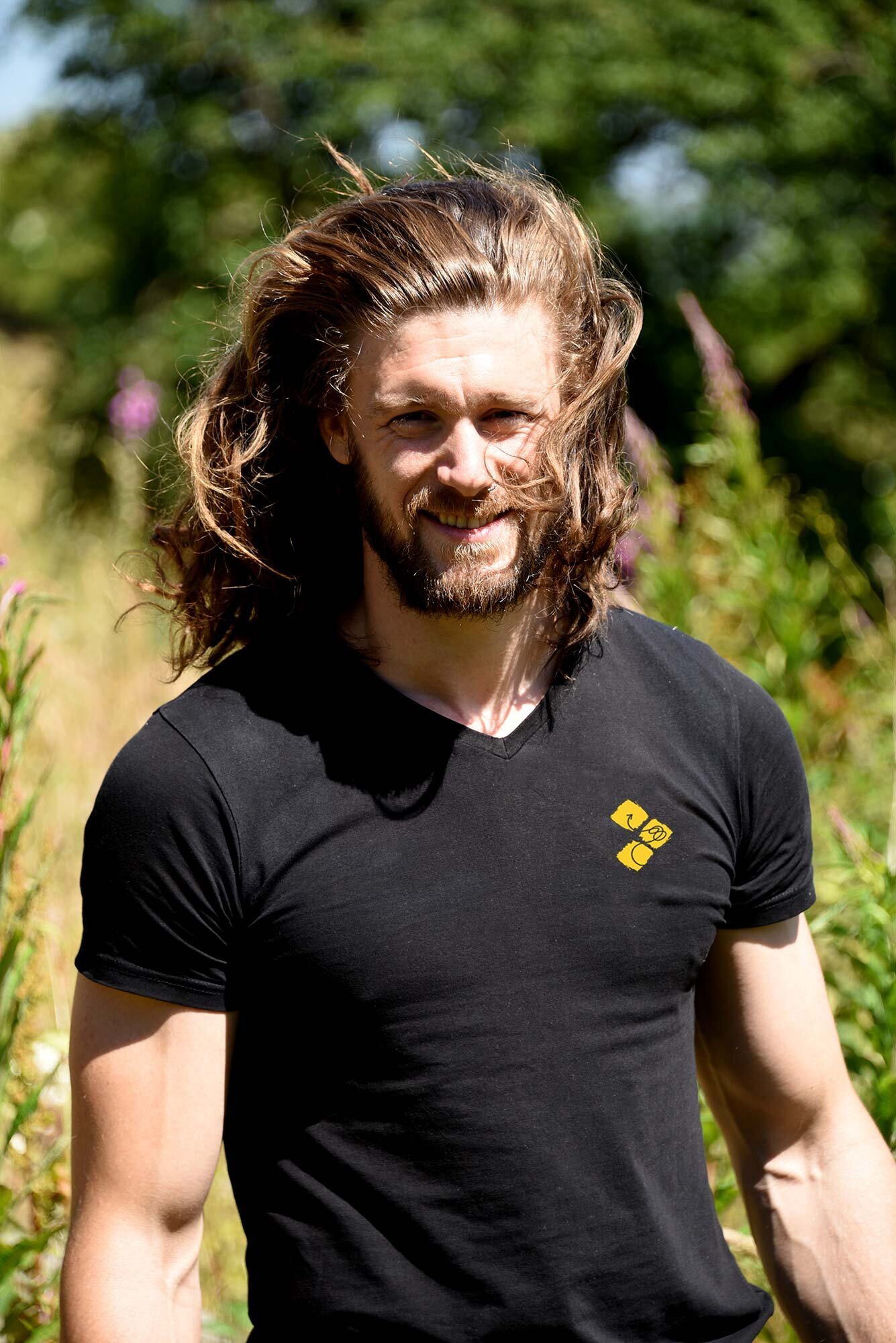B2R Shoulder Stability Project. The Why & The How
Most people expect some form of balance exercise when they are in rehabilitation for a lower limb injury, an ankle sprain or knee surgery for example.
Balance drills we use in the tail end of return to play rehabilitation of lower limb injuries which might include achilles rupture, ankle sprain or knee reconstruction for example (All these have had some version of a task like this with us). One of the many benefits of balance training is that we train our nervous system to ‘stabilise’ our joints in an unpredictable environment - because life and movement is unpredictable. Can we get equivalent benefits in our upper limbs?
Most people have stood on a wobble board at some point and it makes sense that our nervous system has to learn to ‘stabilise’ our joints safely for dynamic activities like running or lifting. Balance training develops our spatial awareness, in particular in our joints and all the small muscles that control movement at those joints. It is also known as proprioception. The equivalent use of balance training in the upper limb to develop proprioception and all the stabilising benefits of doing so; is less popular in healthcare circles at least.
Some readers will be coming at this project from a more traditional Strength & Conditioning (S&C) background and all will be coming at this project as an adult. This is exactly how I came in and should enable me to understand where you are at and help you progress. Upper body training in more classical S&C will involve barbells, kettle / dumbbells and so forth. These exercises generally could be classified as open kinetic chain.
Progress will not be linear, so when we say support your progress, it will be navigating the squiggle, which will happen as part of progress.
USEFUL LINK
For a full 30 minute, storytelling through movement, click here to hear & see exactly how B2R started and evolved as I took the Melbourne group from multiple shoulder dislocations and rehabilitation back to performance sport, primarily through open chain exercises, across the chasm to closed kinetic chain rehabilitation and training through a movement practice, gymnastic strength training and play.
Closed Kinetic Chain and Open Kinetic Chain
This is an important definition and distinction to make in fully understanding the benefits of this project. Descriptively it is all about a reference point for movement. In open chain exercises, the terminal segment, the hand in the case of the upper limb moves the resistance (Example a bench press, your hand moves through a horizontal push whilst your body stays put. In closed chain, the terminal segment is fixed and the body (+/- extra weight) provides resistance to movement (a push up for example, also horizontal push, however the hands remain fixed whilst the body moves (Pozzi et al., 2019).
“Open & closed kinetic chain are all about describing what is moving, the hand or the body.”
This distinction has been shown to have important implications for rehabilitation of shoulder injuries (much like the more well known closed chain exercises we see in the lower body like squats and deadlifts) with greater synchronisation of neural control - coordination essentially. Open chain exercises can also be very effective at different points of rehabilitation as they enable us to isolate a joint, or movement - such as a knee extension, the foot moves, the body stays still (Mellor & Hodges, 2003).
Pozzi et al. (2019) compared open chain and closed chain exercises using young healthy shoulders, part of the exclusion criteria was a history of shoulder surgery or bilateral shoulder injuries - meaning I would not have made the cut (5 total reconstructions, 3 left and 2 right). At least this research tells us a bit about what these exercises do on healthy shoulders, however prescribing it to those with a history of problems is potentially helping those who might benefit most.
In this study, they put electrodes on some of the important muscles that stabilise the shoulder girdle, including parts of the rotator cuff (Middle deltoid, infraspinatus, serratus anterior, erector spinae, external oblique and upper, middle and lower trapezius). While the exercises and training methods used to compare closed v open chain exercises in this study were suboptimal, the comparison of shoulder stabiliser activation is useful. The exercises (and visual difference between open and closed chain) are described below:
Images taken from Pozzi et al (2019). Recall the definition of closed and open chain upper limb exercises. In open chain the hand moves relative to the body, in closed chain the hand is fixed and the body moves. All images on the left hand side are closed chain and immediately next to that image is the researchers comparable movement in open chain (using a machine, not free weights, which is worth noting).
“The open chain exercises in the Pozzi 2019 paper utilised machine based movements, rather than free weights ”
If the subject(s) could not move their bodyweight in the closed chain exercise (as is often the case with a chin up for example), bands were applied to keep the movement closed chain. Exercises from top to bottom, in order and closed chain / open chain; push up / horizontal press, chin up / lat pull down, incline row / horizontal pull, dip / tricep push down, parallel bar shrug / cable straight arm push down, banded horizontal handstand push up / seated machine cable press.
While there are a host of limitations in the study, many of which are discussed in it if you check it out (pump the URL of the abstract into SciHub for the full article, FREE). The main consistent finding was increased muscle activation of those smaller scapular muscles that stabilise the shoulder during closed chain exercises.
Banded rotator cuff conditioning many of us will be familiar with if we have received rehabilitation for the shoulder or Physiotherapy in the past. Is this open or closed chain?
Appreciating the increased muscle firing of closed chain exercises over open throws into question the traditional banded rotator cuff work we are most likely familiar with from any previous rehabilitation or Physiotherapy. These banded exercises are great, and you can expect them in your B2R shoulder stability project (generally as warm up / finishers), however these open chain movements likely are not promoting shoulder stabilisation in the same way closed kinetic chain exercises are (Ubinger et al., 1999). One potential reason you may not have received closed chain rehabilitation previously is clinician familiarity and confidence to do so (Heron et al., 2017, Wright et al., 2018). This is something B2R are passionate about changing.
“Banded (open chain) rotator cuff exercises are great, and you can expect them in this project, however they are likely not eliciting stabilising musculature activation like closed chain work does”
A collection of examples of us working with healthcare professionals on their confidence and implementation of closed chain upper body exercises. Groups from left to right include Bath University Masters Physiotherapy students, Welsh Institute of Chiropractic final year students and finally postgraduate Naprapaths. All images Credit Jacob Baylis.
Another benefit of closed chain upper body exercise, through the lens of stability at least is the superiority of simultaneous ‘core’ musculature activation (Calatayud et al., 2014). Perhaps it is helpful to view the shoulder as part of the core, as a corset which will benefit from training it in such a way.
The pursuit of calisthenic or gymnastic (closed chain) movements require developing a tremendous co-contraction of the core musculature, including the scapula through glutes.
We believe that there is a more effective way to train closed kinetic chain exercises (than Pozzi et al) and these will form much of the basis of this Shoulder Stability Project, whether you are a strength coach looking to diversify your practice, a healthcare professional seeking confidence in closed chain work, maybe you are simply someone with shoulders who is seeking a rounded and balanced programme to develop your physique aesthetics (perfectly reasonable motive) or you have had a history of shoulder complaints (anything from persistent pain to gross instability) you wish to self-manage better. This programme might just be worth your time and investment.
One of the beauties of closed chain training is the weird and wonderful places it can take you. This keeps things interesting.
It liberates us to turn our environment into our gym….
…things we previously walked past everyday become apparatus to explore and test ourselves.
Scapula movement orientation 101.
A BETTER WAY TO TRAIN FOR STABLE SHOULDERS
Ring support hold with ring turn out. This is a tremendous challenge to maintain shoulder depression and locked out elbows. If these two characteristics can not be met then ring turn out (shown) should not be attempted. It is not unusual for very strong athletes to shake aggressively when first attempting this position.
We will be learning to use gymnastic rings as a central pillar for strength development. Rings come with all the stabilising benefits of a closed chain exercise where we must learn to manipulate our body around the rings, PLUS the added challenge to keep them still (bring us back to the wobble board we once stood on for lower limb?). They are elusive. Many people are not patient enough or persistent enough and give up before experiencing the adaptation rings demand.
Pulling up on a ring that moves is very demanding and builds significant pulling strength.
Muscle up may be a skill you can train on the rings in this programme.
There will be a daily demand to hang, such a simple yet dramatic tool for rebuilding our shoulders. Hanging is closed chain, highly accessible, endlessly progressive and regressive (made harder, made easier), your guidelines are HERE.
Single arm active hang reps, training scapula strength into full depression bringing shoulders level with the horizon. This is one drill we release once 2 arm hanging prerequisites have been met.
Advanced switch grip routine. This is an advanced hanging drill that you may work towards through this programme if you can meet all double arm, single arm, passive, active and rotational components.
The second central pillar to the strength (+ skill) component of this project will be manipulating our body on a more stable surface (than rings), the floor. There are a great many ways this could be done, however in this programme our theme and inspiration will be mastery of the strict, gymnastic handstand. This will be the basis of conditioning fundamental shapes like the L-sit and hollow body, movements that carve a midsection to be proud of.
“This is not a handstand programme, we will however be utilising some handstand concepts from some of the best in the world to inspire our stability pursuits.”
It is important to note that this will not be a HANDSTAND programme, mastery of such is a long term pursuit that at different times through your training journey will dominate your training time to a more or less extent depending on its importance to you.
This programme will be drawing on handstand teaching and expertise I have learned in my practice, most notably with The Phoenix Movement as my specialist teachers / mentors in this area.
The freestanding handstand. Pursuing a straight line, with open shoulders and a flat hollowed out low back is ongoing and takes many years. Shoulder stability overhead is a very welcome side effect of chasing that goal.
Conditioning the L position, important for progress to future handstand and bodyweight skills you may wish to chase.
Hollow body, the ability to resist your pelvis slipping anterior and maintaining the ‘corset’ required for a straight line handstand.
Where there is a place we pursue strict lines and positional standards, there is also a place for the complete opposite of that, jagged lines, flow and a more childlike way of playing on our hands. A balance of both is important for progression and adherence.
Some banded exercises we use for priming the scapula muscles leading into sessions where more demanding stability will be required.
Hanging scapula play, used as a warm up and conditioning for exploring all the wonderful ranges we have in our shoulder blades
Shoulder dislocates, when executed effectively are an open chain exercise we will use to develop shoulder mobility.
If we can meet pre-requisite for weighted shoulder dislocates, we can use closed chain drills like skin the cat to develop stable, mobile shoulders.
“For your interest in this project, thank you”
LOGISTICS
The format of learning a shoulder stability training block is discussed in the rings guideline. How this programme will run is very much trial and learn for me, it is exciting and I am grateful for your participation. Thank you.
Creating a ‘general’ training platform that facilitates a wide variety of entry levels and enables progression for each of us as an individual is a challenge, straight off the bat this programme is not for everyone. There will be a great demand for you to be independent, however there will be a diverse group of us working through this project, not necessarily together (if you can train with others simultaneously then there is great benefit, both for motivation and having a spot, tell your friends about us!), but at the same time.
Training will be delivered through True Coach, an app on your smart phone / computer where you will have the opportunity to film and upload your training directly into the software. This is not absolutely required, however, what this will do is enable me to scan each persons training to see things that are going well and maybe not so well.
“There will be two group zoom calls per week, recorded, incase you cant make them”
There will be TWO live group calls per week on zoom. In these sessions I can feedback what I see in your training and also take questions, all in the name of supporting GAINZ. Your question may help someone else, and vice versa.
We as humans, are highly influenced by those around us, which is why it is important we surround ourselves with like minded people if we wish to be influenced for the better. I did a ‘TED’ style talk in Budapest, Hungary about this a couple of years ago. If you wish to share your progress for others in this group to see, we will have a top secret hashtag (#) on Instagram. The # will be only used by us, and is of course optional. We will all be working off different schedules and time zones so if you cannot make the calls, they will be recorded and accessible at our website for the duration of the project. You can also write directly to me on true coach. In our first zoom call you will be shown how we would like your training notes to be written, and videos edited for brevity!
“Share your training journey with others passing through with the SECRET Instagram Hash Tag”
You will receive an email invite to set up true coach when the programme commences. It is perhaps a shift in perspective to film yourself training. You may feel self conscious of others judgement of ‘vanity’. To this, I encourage you to stop caring. Easier said than done. Be the weirdo; hang like a monkey, do handstands, roll on the rings. When people watch this they will be intrigued, start being you and be proud.
“Feeling self-conscious; stop caring for what others think and be the weirdo hanging like a monkey, standing on your hands and rolling on the rings like a kid. Be proud to grow down and go Back to Roots”
It is good practice in self reflection and appraisal to film your form and watch in-between sets. This will enhance your practice and this is how I as your coach can optimise you grasping a training method that could set you on a new life long journey.
Depending on your individual starting level (None required) you may leave with:
Your first time hanging with feet off the floor
a complex continuous single arm hanging routine of 5-10 mins
a 10s L sit hold
your first pull up / push up
your first muscle up or ring flow
a 30 second handstand hold against the wall
a 60 second free standing stacked handstand
an ability to reach overhead like you haven’t for many years
a sense of confidence in your shoulders not previously experienced or maybe you clear up some aches and pains
These are all metrics I have made accessible through this programme. However the reality of what I can expect as a MINIMUM through this 8 week programme is to instil your learning HOW to train. In this way you may not achieve these skills in this block, but you will understand how the process works to join future projects, or run it yourself.
“Everyone will do block A for the first 4 weeks. Testing at the start of the second block will dictate if you repeat or graduate to B”
EVERYONE will have the opportunity to do the same programme (with built in scope for many levels to find the correct dosage and challenge), level A, for the first 4 weeks; the familiarisation phase. We finish the end of this 4 week block with ‘pre-requisite testing’. This will be a series of tests you are told from the start, exactly what they will be, that will dictate whether you do block B programming for weeks 5-8, or repeat block A, or some mixture of the two. These are all options. For some of us, level B programming is really a 12 month goal. You will understand how to get there, if you don’t get there by week 8.
Filming yourself and the necessary technology (true coach) aside, one of the other major strengths of this programme is how little you need, including a gym, however good weather is dependent on where in the world this is reaching you. If it is sunny more often than not, I envy you!
MUST HAVE
Gymnastic rings - link provided in ring article.
Chalk (Liquid is my preference)
Bands like so. One will do, a range is optional.
Mobile phone / true coach.
Wall space you can GET DIRTY (feet on wall)
A bar to hang from - these are better than nothing, however you are encouraged to seek a tree, park or gym that you can get daily access too, and ideally that you can hang your whole body straight without touching the floor. Ah, the problem solving begins.
NICE TO HAVE
Training partner (Spot)
Dowel / broom stick
“I see it as a professional obligation as a healthcare provider to inspire you to want to at least meet minimum physical activity guidelines”
There will be no sugar coating that this programme will demand your time. At least 10 minutes to hang each day and a minimum of 3 training sessions per week lasting 60-120 minutes (especially while familiarising with videos and playing around to have a go and see where you are at). These numbers also get you past your recommended minimum physical activity guidelines per week of moderate / high intensity exercise. If you cannot commit this then it is important to direct you away from this programme now. I also see it as my professional obligation to inspire you one step closer to engaging in meeting physical activity guidelines. It is the pill that makes almost everything better, however for it to work, you must work and there is almost a case for a dose response, the more, the better (there is always an exception, grey in amongst the black and white, see the rings guideline for monitoring overtraining).
There is scope for training up to 6 strength sessions per week if your quality of training and recovery allow. One can participate in this project and reduce the sessions to a bare minimum, which may have a significant positive effect on your health, however may not enable optimal progression towards skill acquisition. As long as this is clear we can move forwards at your pace.
This programme is NOT a tailored individual rehabilitation programme (although all these components regularly feature in programmes we create, they are always part of a compressive biopsychosocial assessment on an individual basis). This programme will have some allocated feedback time to help you work through the programme, which you undertake at your own risk, as per any exercise.
“This is not an individualised rehabilitation programme. Although there will be individualised time for feedback on using the programme you undertake the activities at your own risk, inherent with any physical activity”
Gymnastic strength training will develop whole body tension, including the legs. There will be leg lift conditioning however there is no allocated ‘leg’ training in this programme. It is possible that you could train lower body alongside this programme, we do recommend that you do not perform any other simultaneous upper body training. This conditioning has the potential to be very intense on your upper body (we are looking to drive adaptation!).
There is a high skill demand in this programme (handstand, rings, hang…) which is very taxing on your nervous system, if you choose to continue lower body compound training for example (Olympic weight lifting, squat, deadlift…) or other aerobic / metabolic conditioning then try to structure your week so these are on different days, or AFTER your shoulder stability work. You may wish in future to mix this closed chain work with your open chain strength (bench press, push press….), which has been shown to improve throwing performance in athletes.
TRAIN HARD. RECOVER HARDER
Fight / flight versus rest / digest (Stress physiology). In this clip we introduce a metaphor again to understand an otherwise complex (autonomic nervous system) system which has a very often unappreciated impact on body composition and recovery. We grow and build resources when we shift away from fight / flight yet we produce personal bests when we can turn fight / flight ON. Both ends are great and very individual, we must prioritise rest strategies if we are to train hard.
An infographic we created illustrating the diverse factors impacting our nervous system that can keep us in stress physiology; chronic stress. Addressing these factors could be key to unlocking training plateaus or body composition road blocks and should not be overlooked.
FINAL NOTE
This project is very personal to me, being able to share with you the things I have learned from many experts and found most valuable in rebuilding my shoulders after multiple major surgeries through my late teens and 20s. As of writing this I am in my early 30s and my shoulders have never felt so robust. If all the information you have read above fits your aspirations, then I can’t wait to get going with you and wish you all the very best in your pursuit for whatever it is that has got you to this page.
Please save all guideline articles (The Prehab, The Hang, The Rings, The Handstand) to support you through.
Please acquire any kit you need, details of payment for programme will be sent via email.
See you on the inside,
Luke R. Davies,
#B2Rhealth :)
Luke, Chiropractor, Founder B2R, leading the Shoulder Stability Project.
